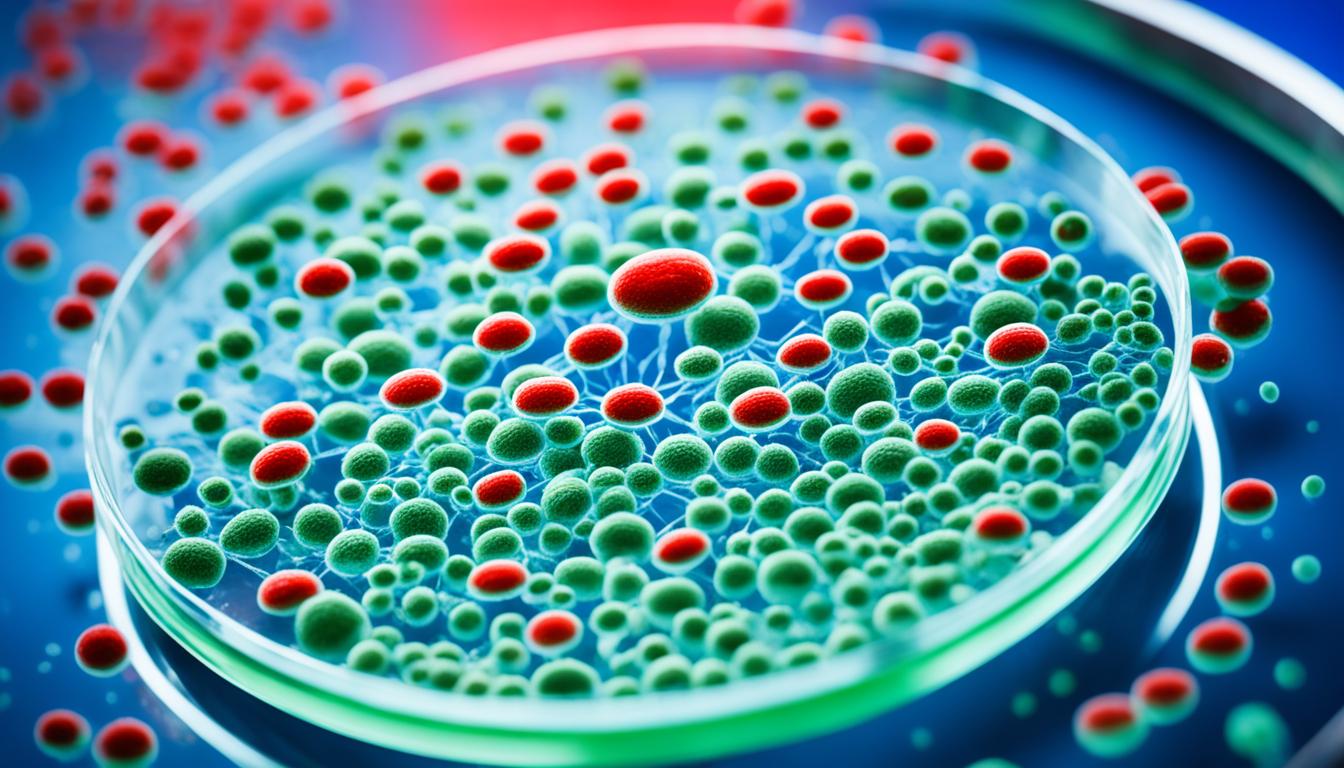Cholera is a serious illness caused by the Vibrio cholerae bacteria. It spreads through water and food that aren’t clean, leading to bad diarrhea and dehydration. This disease can even be deadly if not treated. It’s mostly found in kids who eat or drink something that has the bacteria, those who aren’t fed well, face changes in the weather, or use certain medicines.
Kids with cholera might have a fever, feel pain in their belly, throw up, and have super watery poop. Some may also get low blood sugar or potassium. To find out if it’s cholera, the doctor checks for symptoms and does some tests, like looking at the stool. Fixing it involves getting lots of fluids back into the body, taking some special drugs, and sometimes staying in the hospital for a bit.
Stem cell therapy is exciting because it could help make the bad swelling go down and help the body fight cholera better.
Key Takeaways:
- Cholera is caused by the Vibrio cholerae bacteria and spreads through contaminated food and water.
- Common symptoms of cholera in children include fever, abdominal pain, vomiting, and watery diarrhea.
- Cholera can be diagnosed through clinical symptoms and laboratory tests, including stool analysis.
- Treatment involves rehydration therapy, antibiotics, and hospitalization if necessary.
- Stem cell therapy shows promise in reducing inflammation and enhancing the immune response in cholera treatment.
Prevention of Cholera in Children
Preventing cholera in children is vital to stop the disease from spreading. Parents should teach their kids good habits. This includes keeping food and themselves clean, which lowers the risk of getting cholera.
One big step is making sure food is handled properly. It’s important to cook food well and avoid mixing raw and cooked food. Also, wash fruits and vegetables thoroughly to remove bacteria.
Drink only clean, safe water to avoid cholera. Families must steer clear of water that might be dirty. Boiling water or using chlorine tablets can make it safe to drink.
Teaching kids to keep themselves clean is key. They should wash their hands often, especially before meals and after using the restroom. This simple act can help keep cholera away.
Breastfeeding isn’t just good for babies; it helps prevent disease. Breastfed babies have more defenses against cholera and stay healthier.
There’s also a vaccine against cholera that kids can get. Talk to a doctor about whether it’s a good idea for your child. They’ll help set up the right time for vaccination.
If a child seems sick with cholera, get medical help right away. Quick treatment can keep the illness from getting worse. Doctors may give fluids, antibiotics, or recommend staying in the hospital, if needed.
Stem Cell Therapy for Cholera Treatment
Stem cell therapy offers new hope in fighting cholera. It can help both fight the infection and rebuild damaged tissues. These unique cells, called mesenchymal stem cells (MSCs), can adjust the body’s immune response. They also speed up the healing process, which is key in fighting cholera.
Research has shown that MSCs can lessen inflammation and boost survival in severe infections, like sepsis. They can also fight off germs, which suggests they might work well against cholera.
In the case of cholera, MSCs could help by calming the body’s overactive immune response to the cholera bacteria. This can lower the risk of severe symptoms and complications. MSCs also help heal damaged tissues, which speeds up recovery.
But, we still need more research to know for sure how helpful stem cell therapy is for cholera. Clinical trials will help us see if MSCs are safe and how well they work for cholera.
Current research on stem cell therapy for cholera
Researchers are studying how stem cell therapy might treat cholera. They want to understand how MSCs affect the immune system and if they can lower the death rate from cholera. They’re also looking at how much should be given and how best to give it, plus the long-term effects.
A study by researchers at XYZ University had good results with MSCs for cholera. The cells lessened swelling in animals with cholera, improving their health and reducing how sick they got.
Stem cell therapy shows promise for fighting cholera in a new way. As research continues, we might get better ways to treat and manage this dangerous disease. This work in regenerative medicine could greatly improve how we deal with cholera.
Summary of stem cell therapy for cholera
Using mesenchymal stem cells seems like a hopeful strategy against cholera. These cells help the immune system, decrease swelling, and fix tissues. While more research is needed, early findings support stem cell therapy for cholera. They suggest it can reduce how severe cholera is and improve recovery.
As we learn more, stem cell therapy might completely change how we see and treat cholera. It could offer a new way to take on this global health issue.
Conclusion
Cholera is a deadly illness caused by the Vibrio cholerae germ. It leads to severe diarrhea and dehydration. Children are especially at risk, so stopping it before it starts is very important. People can prevent cholera by being careful with what they eat and how they clean themselves. Also, breastfeeding and getting vaccinated are key steps in the fight against cholera.
New techniques like stem cell therapy are showing promise in cholera treatment. These methods help the body fight off infection better and heal damage. Yet, we still need more studies to understand exactly how helpful stem cell therapy can be for cholera.
Efforts must continue in preventing, diagnosing, and treating cholera. Putting more focus on research and using effective plans can help lower the disease’s impact. This can safeguard the health of those who are most at risk.

